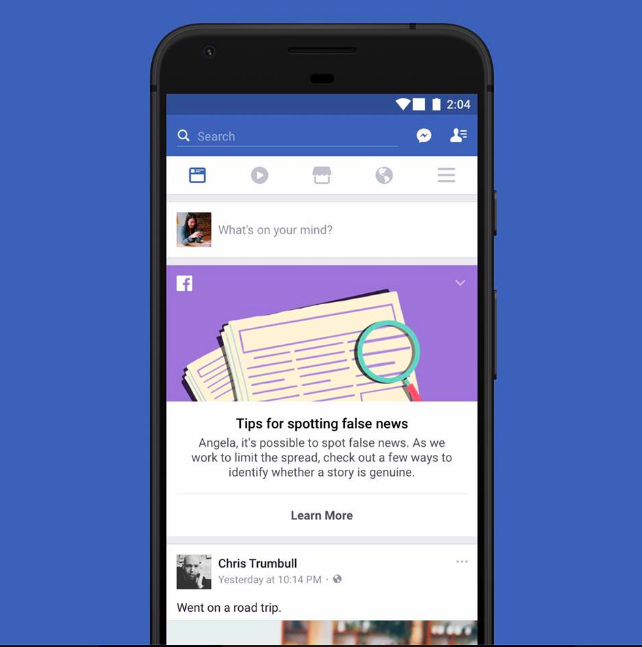Weeding out fake news and hoaxes from the platform has been pretty troublesome for Facebook since last year. There has been a growing controversy over Facebook’s role to spread misinformation on the internet which sharpened the political divisions as well as inflamed discourse during the US presidential campaign.
The social media platform seemed reluctant for putting itself into the position of judging what content is misleading and it took heat after the election for not doing enough to remove fake news reports. But since then, Facebook has been taking many serious steps to approach the problem carefully. The company added few major steps for identifying and flagging the fake news but now it aims to educate people for curbing the problem.
The company is incorporating an alert on the top of the News Feed as Tips for spotting false news. This will be shown to users over the next few days. Just by simply clicking on it, users will be taken to a support page with a lot of useful advice which is as follows
Looking at the URL: For identifying fake news, it is important to look at the URL. Most of the false news website mimics the authentic news sources with very little changes to the URLs. A comparison can unveil the established sources.
Catchy headlines: Fake news tries to grab the attention of the people by placing a catchy headline in all caps with exclamation marks. If claims in the headlines sound implausible, then that is fake news.
Investigating sources: For authentic news, it’s necessary to be written by a source that is trustable. An unfamiliar source can be checked by looking into the “About” section.
Formatting will be unusual: The formatting of fake news is the easiest way to judge whether the news is authentic or not.
Dates Inspection: Fake stories often put on dates that have been altered
Photos: Fake news has photos and videos that are manipulated. A photo or video can be tracked to verify the source.
Look at other reports: An authentic story will be published by every other platform. But if a story does not appear anywhere, it means it’s a false to be reported only by one source.
Check for evidence: Author’s sources can be checked for authenticity. Unnamed experts stories are usually false.
The story can be a joke: It is difficult to separate fake stories from stories that are humorous or are a satire. Always check the source that is known for parody as it can be produced for fun purposes.
Intentionally false stories: Sharing stories without thinking about the material can spread misinformation. Therefore only share the stories that you think are credible.




